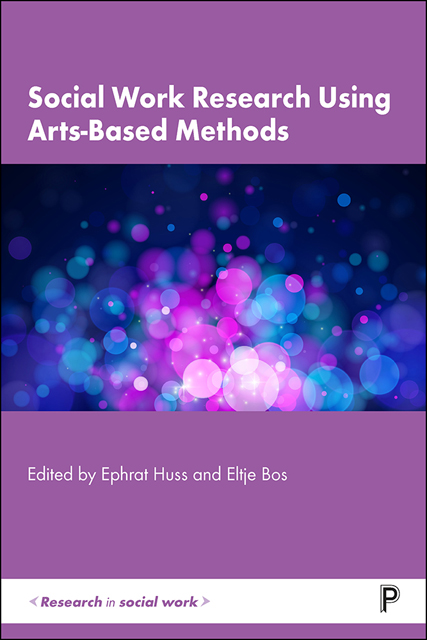Book contents
- Frontmatter
- Dedication
- Contents
- List of figures and tables
- Notes on contributors
- Introduction
- Section I Arts-based research as a method to understand and give voice to marginalised groups
- Section II Using arts-based research to listen to, and give voice to, children in social work
- Section III Arts-based research as a way for researchers and community members to understand communities
- Epilogue
- Index
11 - Murals and photography in community engagement and assessment
Published online by Cambridge University Press: 13 October 2022
- Frontmatter
- Dedication
- Contents
- List of figures and tables
- Notes on contributors
- Introduction
- Section I Arts-based research as a method to understand and give voice to marginalised groups
- Section II Using arts-based research to listen to, and give voice to, children in social work
- Section III Arts-based research as a way for researchers and community members to understand communities
- Epilogue
- Index
Summary
This chapter describes the painting and assessing of a mural on a corner food store in a large urban Midwest centre in the US, a city that was once a thriving industrial centre. In recent years, however, reductions in the manufacturing industry have resulted in unemployment, poverty, population loss, abandoned properties, and business closures – notably, full service grocery stores. Residents express frustration and bitterness at having to depend only on ‘corner stores’ selling mostly junk food, tobacco, and alcohol.
Currently, the city's residents, known for their grit and resilience, have begun repurposing many abandoned properties with vegetable gardens and public art. Grass-roots efforts have been working in concert with non-profit organisations like Groundworks Gardens and the Soup Kitchen Ministries (pseudonyms) to make healthier food options accessible to residents. Murals and other public artworks enliven the environment and the spirits of residents and contribute to the city's revitalisation.
Midwest University, located within the city, has partnered with these and other non-profit organisations in mutually beneficial service-learning, internship, and research relationships. An important mission of the university is community outreach and support, and service-learning and research initiatives are integrated within various departments and courses in the university. One such university initiative is CitySeed, a programme established to build sustainable food systems on the university's campus and in the city, in part, through the ‘Healthy Corner Store Project’. The setting in this chapter is one corner store with which CitySeed collaborated. The store desired to change its image in the neighbourhood by promoting healthy eating and proclaiming its fresh food options to residents. To accomplish this, the assistance of another university programme, ArtsCorps, was elicited to paint a mural on the store to represent the healthy changes in products the store desired to promote.
ArtsCorps was established by arts faculty and faculty from other disciplines who were interested in service-learning (integrating community service into curricula to achieve learning outcomes). ArtsCorps helped identify local arts projects for which the helping hands of service-learners and volunteers could make a critical difference. ArtsCorps was envisioned as a tool to help revitalise the city through the arts using four interrelated components: service-learning, research, volunteerism, and public forums (i.e. opportunities for sharing projects, dialoguing about needs, and next steps through presentations and town hall style meetings).
- Type
- Chapter
- Information
- Social Work Research Using Arts-Based Methods , pp. 129 - 138Publisher: Bristol University PressPrint publication year: 2022

